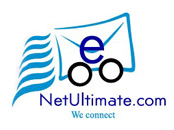Ruby on Rails is a framework that makes it easier to develop, deploy, and maintain web applications. During the months that followed its initial release, Rails went from being an unknown toy to being a worldwide phenomenon. It has won awards, and, more important, it has become the framework of choice for the implementation of a wide range of so-called Web 2.0 applications. It isn’t just trendy among hard-core hackers: many multinational companies are using Rails to create their web applications.
Rails applications are implemented using the Model-View-Controller (MVC) architecture.
The framework makes it easy to test applications, and as a result Rails applications tend to get tested. Rails applications are written in Ruby, a modern, object-oriented scripting Language.
Rails makes it easy for developers to integrate features such as AJAX and RESTful interfaces into their code: support is built in
Rails is all about individuals and interactions. There are no heavy toolsets, no complex configurations, and no elaborate processes. There are just small groups of developers, their favorite editors, and chunks of Ruby code. This leads to transparency; what the developers do is reflected immediately in what the customer sees. It’s an intrinsically interactive process.
